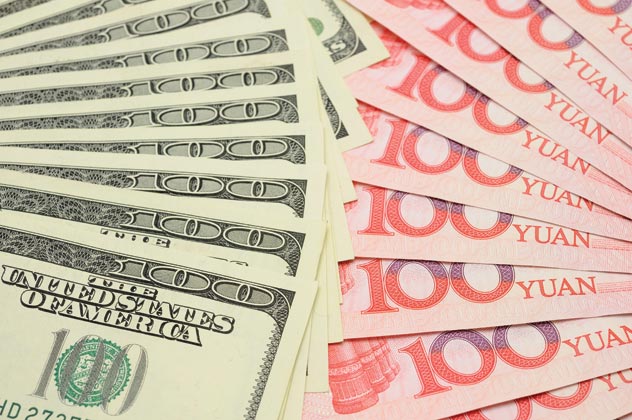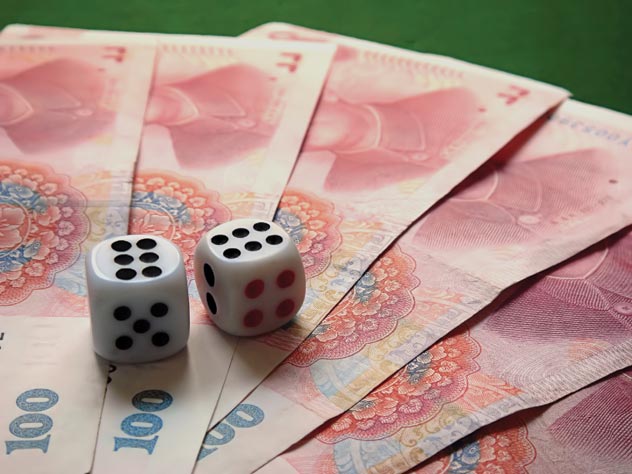|
|
|
ADVERTISEMENTS
|
|
PREMIUM
- HAPPY HOLIDAYS!
- Siliconeer Mobile App - Download Now
- Siliconeer - Multimedia Magazine - email-Subscription
- Avex Funding: Home Loans
- Comcast Xfinity Triple Play Voice - Internet - TV
- AKSHAY PATRA - Bay Area Event - Sat. Dec 6
- Calcoast Mortgage - Home Loans
- New Homes in Silicon Valley: City Ventures - Loden Place - Morgan Hill
- Bombay to Goa Restaurant, Sunnyvale
- Buying, Sellling Real Estate in Fremont, SF Bay Area, CA - Happy Living 4U - Realtor Ashok K. Gupta & Vijay Shah
- Sunnyvale Hindu Temple: December Events
- ARYA Global Cuisine, Cupertino - New Year's Eve Party - Belly Dancing and more
- Bhindi Jewellers - ROLEX
- Dadi Pariwar USA Foundation - Chappan Bhog - Sunnyvale Temple - Nov 16, 2014 - 1 PM
- India Chaat Cuisine, Sunnyvale
- Matrix Insurance Agency: Obamacare - New Healthcare Insurance Policies, Visitors Insurance and more
- New India Bazar: Groceries: Special Sale
- The Chugh Firm - Attorneys and CPAs
- California Temple Schedules
- Christ Church of India - Mela - Bharath to the Bay
- Taste of India - Fremont
- MILAN Indian Cuisine & Milan Sweet Center, Milpitas
- Shiva's Restaurant, Mountain View
- Indian Holiday Options: Vacation in India
- Sakoon Restaurant, Mountain View
- Bombay Garden Restaurants, SF Bay Area
- Law Offices of Mahesh Bajoria - Labor Law
- Sri Venkatesh Bhavan - Pleasanton - South Indian Food
- Alam Accountancy Corporation - Business & Tax Services
- Chaat Paradise, Mountain View & Fremont
- Chaat House, Fremont & Sunnyvale
- Balaji Temple - December Events
- God's Love
- Kids Castle, Newark Fremont: NEW COUPONS
- Pani Puri Company, Santa Clara
- Pandit Parashar (Astrologer)
- Acharya Krishna Kumar Pandey
- Astrologer Mahendra Swamy
- Raj Palace, San Jose: Six Dollars - 10 Samosas
CLASSIFIEDS
MULTIMEDIA VIDEO
|
|
|
|
|
ECONOMICS
Don’t Give it Currency: The Yuan Debate
Instead of becoming a party to the China-U.S. dispute over China’s alleged undervaluation of its currency, the renminbi or yuan, India should pay attention to the underlying reasons for trade imbalance, writes Arvind Panagariya.

In my recent joint article with Columbia economics professor Jagdish Bhagwati (Times of India, May 3) we argued the case against India becoming a party to the China-U.S. dispute over renminbi.
We wrote:
India has joined the U.S. in “China bashing,” calling upon the latter to revalue its currency. According to the Financial Times (April 22, 2010), India’s Reserve Bank governor spoke ahead of a meeting of finance ministers and heads of central banks of the G20 in Washington, joining with Brazil, to make a forceful case for a stronger renminbi (also called yuan). This is a mistake.
For some time now, the U.S. Congress and some Washington think tanks have aggressively sought to turn the bilateral exchange rate issue between the U.S. and China into a multilateral issue. They have done this by asserting that the undervaluation of the Chinese currency hurts not just the U.S. but Asia and others as well.
The underlying argument is based on a syllogism. The first argument is that an undervalued renminbi is the root cause of the Chinese current account surpluses and the U.S. current account deficits. The second argument is that the export expansion so achieved by China robs countries such as Brazil and India of their export markets. The RBI governor was explicit in accepting this second argument when he said: “If China revalues the yuan, it will have a positive impact on our external sector. If some countries manage their exchange rates and keep them artificially low, the burden of adjustment falls on some countries that do not manage their exchange rate so actively.”
But neither argument is acceptable. Consider first the error in the second argument. Just because China fixes its exchange rate against the U.S. dollar does not mean India cannot choose the value of its currency against the dollar or other currencies including the renminbi at the level it sees appropriate for itself. What happens to India’s exports and imports depends on what it does to its own exchange rate, money supply and fiscal deficits and how its savings and investment are balanced.
In the article we argued that an undervalued currency was not the main cause of trade imbalance:
The major explanation for the current imbalances between China and the U.S. lies in the savings-investment gaps in the countries. China (as also Germany, Japan, Switzerland and Norway) saves more than it is able to invest domestically while the opposite holds for the U.S. The exchange rate may marginally impact these balances but not nearly enough. Until 1976, the U.S. faced the opposite situation, saving more than it invested. It later learned to spend more and save less. As the living standards of the Chinese rise, you can be sure they too will learn to spend more, thereby self-destructing their current surpluses.
India also makes a major tactical error by lending its voice to the calls for the appreciation of the renminbi. With its savings rate high and rising, it too could run into the Chinese “problem” of a current account surplus. It is surely a mistake then to go down this road where short-sighted U.S. politicians and their enablers would have us go. Politically also India makes an error by taking sides in what is essentially a China-U.S. issue. We have enough problems with China not to want to add a gratuitous one. Will the prime minister take note?
The article brought back an unusually large volume of mail. While the vast majority appreciated our forthright dissection, with Professor Kishore Gawande of University of Texas A&M even congratulating us for calling a spade a spade, some readers drew attention to contrary arguments we had missed. Three of these arguments deserve a response.
Unsurprisingly, the most important of the contrary arguments originated in Washington, D.C. According to it, even if prudent exchange rate management has allowed India to neutralize the effects of renminbi undervaluation in its export markets, Chinese undervaluation has hurt India in its own market. As proof, those making the argument cite the large number of anti-dumping cases India has initiated against China in the recent past.

While sounding plausible, upon closer scrutiny, this argument turns out to be just as specious as others I had discussed in my joint article. Under WTO rules, an importing country has the right to impose anti-dumping duties on the foreign firms found selling their products below cost provided imports are shown to cause injury to domestic producers of like products. Usually, anti-dumping actions proliferate in the face of sudden import surges. Import surges in turn may result from large-scale trade liberalization, a sharp rise in the value of domestic currency that makes imports cheaper or a global recession that intensifies competition in all markets.
During July 1, 2008 to June 30, 2009, the latest one-year period for which data are available, India turned out to be the largest user of anti-dumping, initiating 59 new cases. Of these, 17 were against China, the largest number against any single trading partner. The question this raises is whether this large number can be attributed in any meaningful way to renminbi undervaluation vis-a-vis the dollar.
At least five reasons point to a negative answer to this question. First, conceptually, one must show that the renminbi is undervalued against the rupee not against the dollar. Since India is free to choose its own exchange rate, undervaluation against the dollar does not automatically imply undervaluation against the rupee.
Second, China began pegging renminbi in 1997. But beginning on July 1, 2005, it allowed the latter to appreciate against the dollar. By April 10, 2008, the currency had appreciated more than 18 percent. This should have reduced rather than increased the exchange rate related advantage Chinese firms enjoyed. Since anti-dumping accelerated after April 2008, prima facie, its cause has to be rooted in something other than renminbi undervaluation.
Third, even the large number of cases against China is readily explained by the fact that China is by far the largest single source of merchandise imports into India. Other trade partners, none of whom have been accused of undervaluing their currencies, have had their “fair” share of anti-dumping. Taken together, Thailand, Malaysia, Indonesia, South Korea and Singapore were subjected to just as many cases as China. Tiny Thailand alone was the victim of as many as six cases.
Fourth and perhaps most surprisingly, along with Argentina, China has the distinction of being the second largest initiator of anti-dumping cases during July 1, 2008 to June 30, 2009. These countries initiated 25 cases each during the one-year period. Surely Chinese firms could not have been the victims of undervaluation of their own country’s currency!
Finally, since the renminbi is pegged to the dollar, the country most affected by it has to be the U.S. If anti-dumping were a key outcome of injury from the undervaluation, the U.S. should be its biggest practitioner. But with nine cases during the relevant one-year period, the U.S. ranks 9th among the initiators of anti-dumping cases!
The cause of the upsurge in antidumping, thus, could not have been renminbi undervaluation. Indeed, its proliferation around the world including China points to a common factor as the cause. That common factor is the global financial crisis that sent the world economy into a tailspin, with firms from all countries looking for markets in every nook and corner of the world.
The second argument in favor of India joining the U.S. against China in the exchange-rate dispute is that China cannot be permitted to violate international rules governing exchange rates while others diligently follow them. This argument is based on either a misunderstanding or misrepresentation of international rules. The WTO and International Monetary Fund give countries the freedom to choose their own exchange rates. If that were not the case, with more than 200 currencies around the world, hundreds of bilateral exchange rates will always be in dispute for undervaluation or overvaluation and countries will be perpetually battling one another over them.
The final argument offered is that the renminbi peg has displaced India from export markets in labor-intensive products. Here it needs reminding that China has been super-competitive in labor-intensive exports for three decades. In contrast, India has been largely uncompetitive in these products for its entire post-independence history. Around the time China began pegging the renminbi, it actually moved away from the traditional labor-intensive industries such as textiles and footwear (though not apparel).
Currently, three largest exports of China (using 2-digit United Nations SITC classification) do not include even apparel. The explanation for the contrast is almost wholly to be found in the internal policies of the two countries. China never applied the small-scale industries reservation to the labor-intensive products, it never restricted large firms to investing exclusively in the so-called “core” industries and it has had the most flexible labor laws.
The result of restrictive domestic policies in India has been that we have lost out in labor-intensive sectors to even Vietnam and Bangladesh. Sadly, we are now resorting to measures that hurt our most successful farmers of cotton by banning their exports so that our textile manufacturers can compete. So much for inclusive growth!
|
 Arvind Panagariya is Jagdish Bhagwati Professor of Indian Political Economy at Columbia University. Arvind Panagariya is Jagdish Bhagwati Professor of Indian Political Economy at Columbia University.
|
|
|
|
|
|